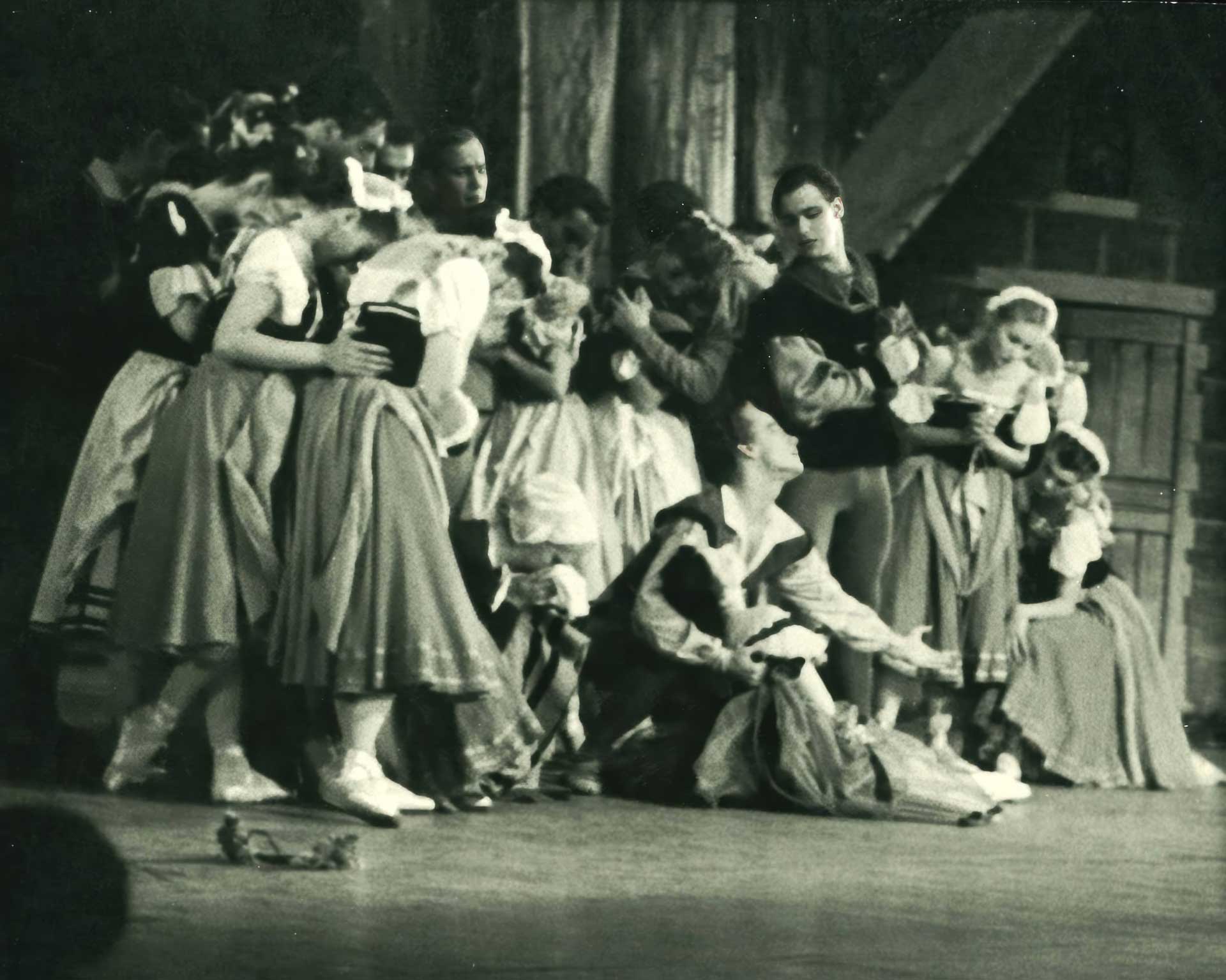people » John Gilpin
John Gilpin (1930-1983). British dancer and director
John Gilpin, one of the outstanding classical dancers of his generation, was born in Southsea, Portsmouth, in 1930. He took dancing lessons from the age of seven, first at Cone-Ripman School and then at the Ballet Rambert School. He also performed as a child actor, and joined Ballet Rambert in 1945. By the following year Gilpin was already dancing Le Spectre de la Rose, a ballet with which he was to be particularly associated.
Having become a principal dancer at Ballet Rambert, in 1949 he joined Roland Petit’s Ballet de Paris. In 1950 he moved on to the Marquis de Cuevas’s Grand Ballet de Monte Carlo. Though he only remained a short while, his time there put him among a range of notable dancers, including the Americans Rosella Hightower and Marjorie Tallchief, and also André Eglevsky, George Skibine and Serge Golovine, male dancers with a Russian
background.
In June 1950, Gilpin returned to London, as a principal with London Festival Ballet, a company formed by Alicia Markova, Anton Dolin and Julian Braunsweg. Again, Gilpin was to be among celebrated dancers and to become celebrated himself. He was Albrecht to the Giselles of Nathalie Krassovska and Tatiana Riabouchinska, former luminaries of the Ballet Russe, and was chosen by Léonide Massine to dance in his ballets. In 1954, in Monte Carlo, Moira Shearer, appearing as a guest artist with Festival Ballet, was the
Young Girl to Gilpin’s Rose, in what was her last performance as a dancer.
In 1960 Gilpin left London Festival Ballet, where he had become principal dancer, to tour South Africa with a small group of dancers. On his return to Europe in 1961, while dancing in Milan with Carla Fracci, the great Italian ballerina, he was invited to join The Royal Ballet as a permanent guest artist. He made his debut with the company in April, dancing the Blue Boy in Frederick Ashton’s Les Patineurs. At the end of December 1961 he was Prince Florimund to Antoinette Sibley’s Princess Aurora in The Sleeping Beauty, a
partnership made in heaven, according to the dance critic Clive Barnes. While with The Royal Ballet, Gilpin also danced Le Spectre de la Rose with Margot Fonteyn, once more to much acclaim.
After 1962, however, Gilpin returned to London Festival Ballet, acting as its artistic director until 1965. He retired from dancing in 1970, due to injury. In 1963 he won the Royal Academy of Dance’s Queen Elizabeth II Coronation Award for services to dance.
He died in London in 1983, and is buried in Monaco. He had married, as his second wife, the Princess Antoinette, Baroness Massy, a sister of Prince Rainier of Monaco, shortly before his death.

